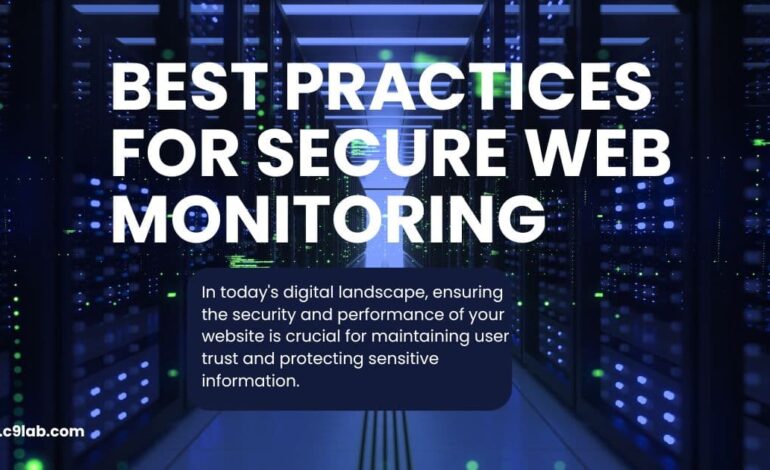
The Importance of Cybersecurity Awareness Training
Why Cybersecurity Awareness is Essential for Protecting Your Business in the Digital Age
In today’s digital age, cybersecurity threats are becoming increasingly sophisticated. To safeguard your business against these evolving threats, it’s crucial to invest in comprehensive cybersecurity awareness training. This type of training equips your employees with the knowledge and skills needed to recognize and respond to cyber threats, thereby strengthening your overall security posture. In this blog, we explore the importance of cybersecurity awareness training and its benefits for your organization.
What is Cybersecurity Awareness Training?
Cybersecurity awareness training involves educating employees about various cyber threats, such as phishing, malware, ransomware, and social engineering attacks. The goal is to build a culture of security within the organization where every employee understands their role in protecting sensitive information and systems.
Benefits of Cybersecurity Awareness Training

1. Reduces Risk of Human Error
One of the primary benefits of cybersecurity awareness training is the reduction of human error. Many cyber attacks exploit human vulnerabilities through tactics like phishing and social engineering. By educating employees on how to recognize these threats, you can significantly reduce the risk of successful attacks.
Tip: Implement regular training sessions and simulated phishing attacks to keep employees vigilant and improve their ability to identify suspicious activities.
2. Enhances Incident Response
Training employees on how to respond to potential security incidents can greatly enhance your incident response capabilities. When employees know the appropriate steps to take during a cyber attack, they can help contain and mitigate the impact more effectively.
Tip: Develop clear incident response protocols and include them in your training programs to ensure all employees know how to act quickly and correctly during an incident.
3. Promotes a Security-First Culture
A strong security culture within your organization can be a powerful defense against cyber threats. When employees understand the importance of cybersecurity and are committed to following best practices, your organization becomes more resilient to attacks.
Tip: Encourage a security-first mindset by recognizing and rewarding employees who demonstrate excellent security practices.
4. Ensures Compliance with Regulations
Many industries are subject to strict cybersecurity regulations and standards. Regular cybersecurity awareness training helps ensure that your employees are aware of and comply with these regulations, reducing the risk of non-compliance penalties.
Tip: Tailor your training programs to include specific regulatory requirements relevant to your industry, such as GDPR, HIPAA, or PCI-DSS.
5. Protects Sensitive Information
Training helps employees understand the importance of protecting sensitive information, such as customer data, intellectual property, and financial records. By educating employees on data protection best practices, you can minimize the risk of data breaches and leaks.
Tip: Include modules on data classification, encryption, and secure data handling in your training programs.
Implementing Effective Cybersecurity Awareness Training
To maximize the benefits of cybersecurity awareness training, consider the following best practices:
1. Regular Training Sessions
Cybersecurity threats are constantly evolving, so it’s essential to keep employees informed about the latest risks and defensive strategies. Regular training sessions ensure that cybersecurity stays at the forefront of employees’ minds and that they remain vigilant against potential threats. Consider scheduling sessions quarterly or biannually, as well as adding refresher courses or ad-hoc training when new types of threats emerge (like new phishing tactics or malware variants). By making cybersecurity training an ongoing part of the company culture, you reinforce the importance of security and improve long-term retention of knowledge.
Tip: Regularly assess employees’ cybersecurity knowledge to identify areas where further training may be needed. Tools like simulated phishing attacks can help gauge how well employees apply their knowledge in real-world scenarios.
2. Interactive Content
Training that’s interactive and engaging is far more effective than traditional, passive presentations. Interactive content—such as videos, quizzes, simulations, and role-playing exercises—helps employees stay engaged and retain more information. For example, simulations of real cyber threats (like a phishing email exercise) provide hands-on experience that prepares employees to handle similar situations. Quizzes can test understanding immediately after the session and highlight key areas that need reinforcement. When employees are actively participating, they’re more likely to understand and internalize the training material.
Tip: Incorporate gamification elements, like earning points or certificates for completing modules, to boost motivation and participation.
3. Tailored Training
One-size-fits-all training often falls short, as different roles within an organization face different types of cybersecurity threats. Tailored training means customizing programs based on each employee’s role and level of access to sensitive information. For instance, employees in finance might need extra training on phishing and social engineering tactics, while IT staff might need in-depth training on identifying malware and secure coding practices. Tailoring content ensures that training is relevant and actionable, enabling each employee to apply best practices directly to their specific responsibilities.
Tip: Conduct a cybersecurity risk assessment to identify high-risk roles within the company, then design specialized training modules for these roles.
4. Continuous Improvement
Cybersecurity is a rapidly changing field, and training programs need to reflect the latest threats and industry best practices. Continuous improvement involves regularly updating training materials to include new threats (like emerging ransomware or social engineering tactics) and updated policies or regulatory requirements. Review and refresh training content at least annually, or more frequently if significant new threats emerge. This approach ensures that your organization’s cybersecurity awareness training remains current and effective, rather than becoming outdated and less relevant.
Tip: Tools like C9Phish from C9Lab provide AI-based awareness evaluation and tailored training programs that can help you implement effective cybersecurity awareness training for your organization.
FAQs
1. Why is cybersecurity awareness training important?
Cybersecurity awareness training is important because it educates employees about the latest cyber threats and teaches them how to recognize and respond to potential attacks, reducing the risk of successful breaches.
2. How often should cybersecurity awareness training be conducted?
Cybersecurity awareness training should be conducted regularly, at least annually, with additional sessions as needed to address new threats and updates in best practices.
3. What topics should be covered in cybersecurity awareness training?
Training should cover topics such as phishing, malware, ransomware, social engineering, data protection, and incident response protocols.
4. How does cybersecurity awareness training enhance incident response?
Training enhances incident response by ensuring employees know the correct actions to take during a cyber attack, helping to contain and mitigate the impact more effectively.
5. What are some tools that can help with cybersecurity awareness training?
Tools like C9Phish offer AI-based awareness evaluation and customized training programs that help improve employees’ cybersecurity knowledge and skills.
Conclusion
Investing in cybersecurity awareness training is essential for protecting your business from cyber threats. By educating employees, reducing human error, enhancing incident response, promoting a security-first culture, ensuring compliance, and protecting sensitive information, you can significantly strengthen your organization’s cybersecurity posture. Leverage tools like C9Phish to implement effective training programs and build a resilient, security-aware workforce.
To Stay Updated with Latest Cybersecurity Trends and News- Cyber Briefs



